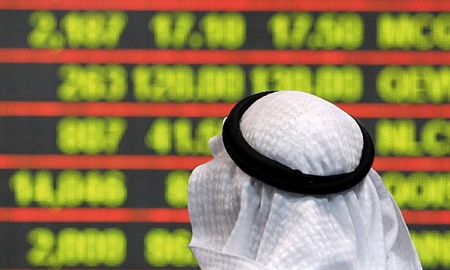Just a couple of weeks after his appointment as CEO of Qatar Exchange, Rashid bin Ali Al Mansoori, found himself at Doha’s St Regis Hotel collecting Global Investor’s highly prestigious Middle East “Exchange of the Year” award.
It’s the second time Qatar Exchange (QE) has walked off with the title, which it also won in 2010, after being picked by investors as the best stock exchange in the Middle East and North Africa (MENA) region.
The award highlighted QE’s role as a significant player in the regional exchange space and the efforts it has made to enhance the quality and depth of Qatar’s capital market, as well as support local companies.
In the longer term, however, the Qatar Exchange is part of a wider vision of creating a world-class financial centre around a global exchange, in the same league as the leading capital markets in Europe, the US, and Asia.
To this end, the exchange has launched a series of initiatives. It has successfully implemented the delivery-versus-payment system to enhance the efficiency of the settlement process, opened up the market to allow banks to re-enter as brokers, and introduced direct payment of dividends into the bank accounts of investors.
Other developments include listing short-term Treasury Bills to attract the attention of banks and financial institutions as well as investors, and preparations to launch government, and eventually corporate, bonds.
Securities lending and borrowing, along with liquidity provision schemes, have also been introduced. Earlier this year, the exchange launched its ambitious Venture Market, a separate junior bourse for small and medium-sized enterprises (SMEs), whose growth is vitally important to Qatar’s development of a diversified national economy.
Celebrating it’s 15th year, the Qatar Exchange was the best performing stock exchange in the MENA region in 2010 and 2011
|
The choice of Al Mansoori as QE’s new CEO fits with the general policy of appointing highly qualified Qataris to leading positions in government and semi government institutions. He brings considerable administrative and technical experience to the role, and for the previous 18 months served as QE’s deputy CEO.
QE was established in 2009 as a successor to the Doha Securities Market. It is jointly owned by Qatar Holding, the strategic and direct investment arm of Qatar Investment Authority, and the New York Stock Exchange operator, NYSE Euronext, whose 20 percent stake – at $200 million – represented the largest investment it had ever made in a foreign exchange.
QE benefits from NYSE Euronext’s renowned trading systems and technology. It is the first exchange outside the NYSE Euronext family of exchanges to utilize the Universal Trading Platform (UTP), now used by every NYSE Euronext market around the world.
The intention to transform QE into an internationally recognized exchange has been there from the start. Qatar is expected to be the second-largest economy among the GCC countries by 2015, making it an ideal location for a major capital market in one of the world’s fastest-growing regions.
It is this potential that has drawn in NYSE Euronext, which is committed to use Doha as its Middle East operational and support hub.
QE currently has 41 listed companies, with banks and insurance companies featuring prominently, and the real estate, consumer goods and services, and transport sectors also represented. For the three quarters up to September 30, 2012, the combined net profit of all the companies – with the exception of Vodafone Qatar, whose financial year starts in April – amounted to $7.82 billion, an increase of 1.8 percent over the corresponding period in 2011.
QE has also collaborated in developing a legislative framework to give investors a variety of tools, including exchange-traded funds and real estate investment trusts, while promoting transparency in the market.
Listed companies from neighbouring GCC countries are showing an interest. QE has already begun talks with a number of GCC-listed companies who are actively working towards listing here in Qatar.
Experts suggest there might soon be a renewed effort towards initial public offerings (IPOs) in Qatar.
Barwa Bank is among the major Qatari companies that have publicly discussed a listing on QE.
Talks have also been taking place with some of the key businesses in the SME sector about listing on the new Venture Market. QE’s management emphasises the importance of enhancing liquidity in the market, and the exchange is already working with the regulator to address concerns about the need for greater liquidity provision.
QE is ready for securities lending and borrowing to attract more foreign investments, and applications have been made by three entities to act as liquidity providers.

0 COMMENTS